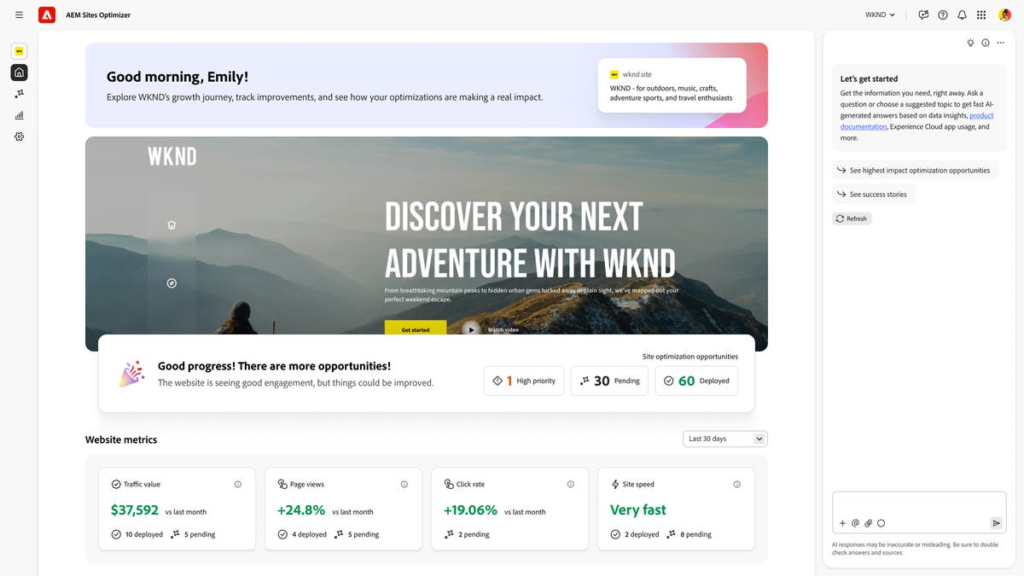In today’s fast-paced digital landscape, small and medium-sized businesses (SMBs) are continually grappling with the challenge of delivering exceptional customer experiences. The announcement at the Adobe Summit regarding new offerings within the Adobe Experience Cloud highlights a critical opportunity for these businesses to improve their operations. By integrating AI-driven workflows and automation strategies, SMBs can enhance efficiency, elevate decision-making, and boost productivity, all of which are essential for sustaining a competitive edge.
As the digital marketplace evolves, the need for a unified customer experience has become paramount. Disjointed workflows that involve managing data, content, and customer journeys can be significant hurdles for SMBs. This fragmentation often leads to inefficiencies, wasted resources, and missed opportunities. However, by adopting AI-driven workflows, businesses can streamline these operations and forge a more cohesive approach to customer engagement.
One of the most effective ways to implement an AI-driven workflow is through the automation of repetitive tasks. For instance, consider the process of managing customer interactions across different channels. Typically, this requires manual input and oversight, leading to potential errors and delays. By employing AI tools that can orchestrate customer journeys automatically, SMBs can ensure that interactions are not only timely but also relevant. These tools can gather data from various touchpoints, analyze customer behavior, and tailor communications accordingly, saving time and reducing the risk of human error.
Moreover, AI agents can provide actionable insights that are essential for informed decision-making. By harnessing comprehensive data analytics, SMBs can identify trends and customer preferences that inform marketing strategies. For example, if data indicates that a particular demographic responds favorably to a specific type of content, businesses can quickly pivot their marketing efforts to capitalize on these insights. This ability to adapt and respond instantaneously can significantly enhance a brand’s relevance in a crowded market.
Implementing AI does not have to pose a heavy financial burden. In fact, the ROI of deploying these technologies can be quite favorable. Automation can lead to significant time savings. For example, an SMB that replaces manual data entry with AI-driven tools can redeploy those human resources to more strategic initiatives, ultimately driving growth and innovation. When productivity increases due to streamlined processes, the benefits can ripple through the entire organization, resulting in higher employee satisfaction and better customer relations.
Another practical application of AI in an SMB context is through customer segmentation. Advanced AI algorithms can analyze customer data to develop highly specific segments based on behavior, preferences, and purchasing history. This allows SMBs to target marketing efforts more effectively, ensuring that the right messages reach the right audiences. For instance, a small online retailer could use AI to identify and cater to high-value customers with personalized offers, while automating the overall marketing campaigns to reduce labor costs and enhance precision.
Incorporating AI-driven solutions into daily operations also means embracing change management. It is crucial for leaders to foster a culture that embraces technological innovations. This starts with training staff on AI tools and ensuring they understand how these systems work. By empowering employees to leverage AI in their workflows, businesses can enhance overall productivity and morale. Employees are more likely to feel engaged when they are equipped with tools that simplify their tasks and enable them to focus on creative problem-solving.
Furthermore, leveraging third-party systems and tools that integrate well with existing processes can be beneficial. As highlighted by Adobe’s expansion of its AI offerings, the combination of first-party data insights with third-party applications can create a powerful ecosystem for decision-making. For SMBs, utilizing such integrations can help maximize the impact of their digital efforts. For instance, a small business could integrate a customer relationship management (CRM) tool with AI capabilities to gain richer insights and automate follow-ups with leads.
SMBs that adopt AI-driven workflows will likely find that their ability to respond to customer needs and preferences improves considerably. The real-time analytics offered by advanced tools allow businesses to evolve their strategies based on immediate customer feedback and behaviors. This data-informed approach can lead to more successful campaigns and enhanced customer relationships, ultimately driving brand loyalty.
Lastly, businesses should measure the outcomes of their AI integrations. By setting key performance indicators (KPIs), such as reduced response times, increased sales conversions, or improved customer satisfaction scores, SMB leaders can track the effectiveness of their adopted strategies. This not only reinforces the value of implementing AI but also provides insights into areas that may require further refinement or investment.
The journey toward AI integration may appear daunting, yet the potential benefits far outweigh the challenges. By adopting automation and AI-driven workflows, SMBs can optimize their day-to-day operations, enhance efficiency, and improve decision-making processes. The future of business is undeniably digital, and leveraging technology effectively will be pivotal in navigating that landscape.
FlowMind AI Insight: Embracing AI-driven workflows is not just about technology; it’s about rethinking how businesses operate. For SMBs, integrating these intelligent systems can lead to a more agile organization that understands and adapits to customer needs, paving the way for sustainable growth and enduring brand loyalty.
Original article: Read here
2025-03-18 07:00:00

